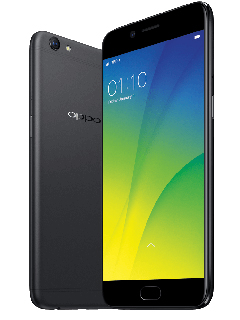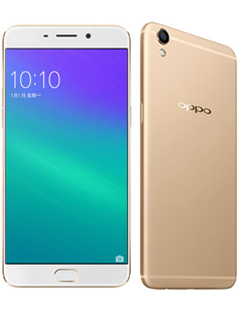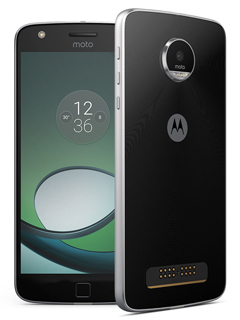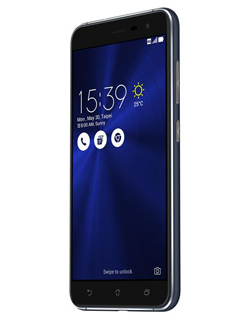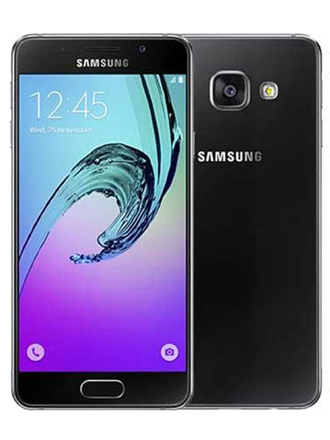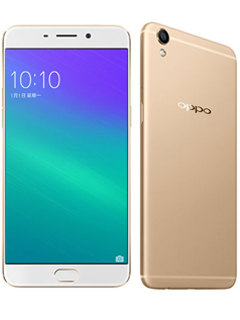Oppo R9s & R9s Plus smartphone review: Can they challenge the incumbents?
Overview
The Oppo R9s entered the local smartphone market back in late-2016, with the R9s Plus finally arriving in Singapore in late-February 2017. According to Oppo, the smartphone duo serve as an upgrade to the early-2016 phones, Oppo R9 and R9 Plus. The two versions differ in sizes, with the smaller R9s having a 5.5-inch display, while the bigger R9s Plus packs a 6.0-inch display. Both displays are rated at Full HD (1,920 x 1,080 pixels resolution).
The main draw in the R9s is how Oppo uses an "exclusive" 16-megapixel Sony IMX398 sensor with f/1.7 aperture for its rear camera, which supposedly offers higher quality photography. Case in point, the smartphone that nabbed the highest DxOMark Mobile photography score (as of writing) was the Google Pixel, which uses a Sony IMX378 sensor. The R9s’s new sensor is also an upgrade versus the preceding R9, which had 13 megapixels resolution, and an f/2.2 aperture lens. The new phones also come with Dual Phase Detection Autofocus (PDAF), which provides up to 40% faster focus speeds than its predecessor.

Another significant change is the use of Qualcomm Snapdragon 625 SoC in the R9s. The preceding Oppo R9 packed a MediaTek MT6755 octa-core processor, marking it as a huge upgrade when you pick the new R9s over the R9. MediaTek processors are notoriously famous for their lackluster battery efficiency (further reinforced by our existing benchmarks of other MediaTek-powered devices), while the Snapdragon 625 exhibits battery efficiency beyond expectations (as seen in our Moto Z Play and ASUS ZenFone 3 reviews). It’s quite a drastic switch, but we do expect much better battery life on the newer R9s.
The Oppo R9s Plus uses a Qualcomm Snapdragon 653 processor instead, which supposedly comes with 10% higher CPU performance than the Snapdragon 652, while supporting up to 8GB RAM. To that end, the R9s Plus packs 6GB RAM, while its smaller sibling holds 4GB RAM.
So, are these Oppo phones worth a shot? Let's find out.
|
| |
|
| |
|
| |
|
| |
|
| |
|
| |
|
| |
|
| |
|
| |
|
| |
|
|
Design & Handling

The earlier R9 and R9 Plus designs were heavily inspired by the Apple iPhone series, and the new R9s and R9s Plus models are no different. In fact, they are nearly indistinguishable from its preceding models. To that end, Oppo has taken extra effort to show that they are different, thanks to their new ultra-fine "six-string" antenna lines on the rear of both phones. These 0.3mm lines also represent the six networks’ frequency ranges that the R9s and R9s Plus can operate on. They distribute three lines to the top and bottom of the phone, where the phone’s antennas are typically located. Similar to the iPhone, though not how they are executed, the volume buttons are on the left profile of the phone, and power button is on the right.
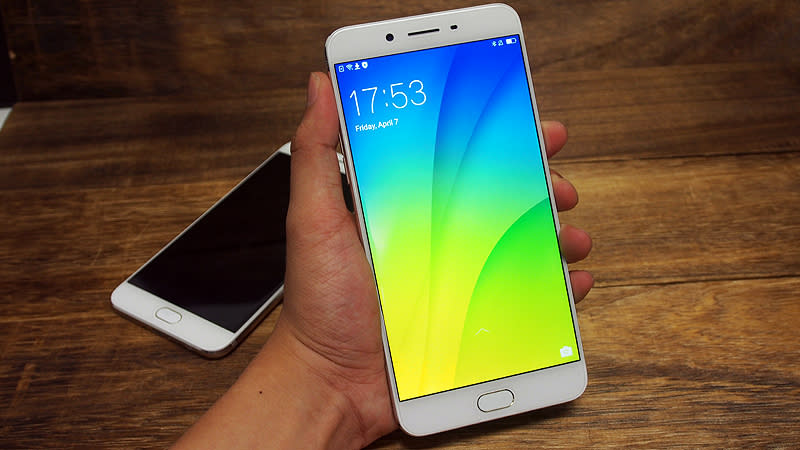
Both the R9s and R9s Plus use Corning Gorilla Glass 5 for its glass panel. They also tout a mostly-metal rear that wraps around the sides. The metal body tapers off towards the front panel, finishing in a chamfered metal rim that runs around the display. It's a "safe" design, since it clearly looks inspired by the iPhones of late. It goes without saying that the phones feels quite familiar when held in hand too. While the R9s Plus has a wide body, its 7.4mm thin profile makes it really easy to hold the phone confidently. Having a familiar design also meant that the power and volume buttons are instinctively accessible.

Display & Audio

The Oppo R9s has a 5.5-inch AMOLED, Full HD (1,920 x 1,080 pixels resolution) display.
The Oppo R9s Plus has a 6.0-inch version with the same resolution size. In essence, this gives the smaller R9s a higher pixel density of ~401 PPI, while the bigger R9s Plus with the same resolution sits at ~367 PPI. Despite the differences in pixel density, it doesn’t translate into practical use since the average human eye can't easily discern differences above 300 PPI.
More crucial, however, is Oppo's choice to use AMOLED displays, which gives it a vibrant hue, albeit slightly oversaturated and warm color temperature. From our test images above, we can see that the Oppo R9s and Oppo R9s Plus exhibit general color vibrancy with a reddish tint (most visible in the snow-capped mountains and the black hot-air balloon).
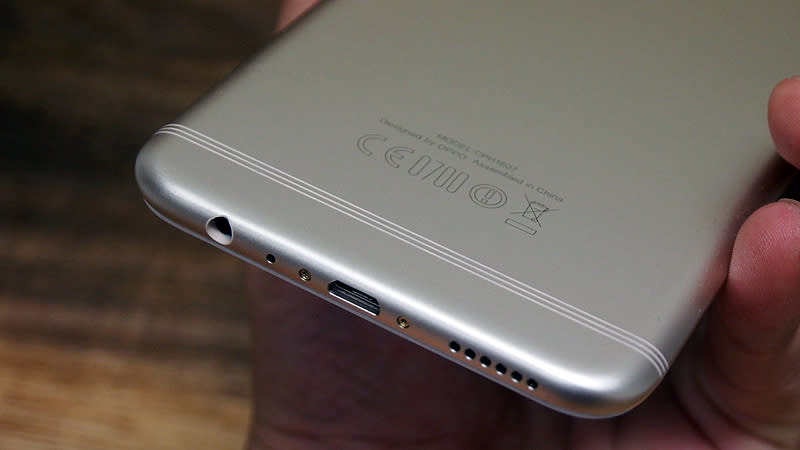
The phones' audio relies on the speakers that lie next to the micro-USB charging port. There's no discernable difference in volume between both phones, and they are functional for its purposes. Also note that both devices have a 3.5mm audio jack.
UI & Phone Features

The Oppo R9s and R9s Plus use Android OS 6.0 (Marshmallow) out of the box. Its operating system comes skinned with a proprietary ColorOS 3.0, which looks youthful and tidy.
They look like premium smartphones, but the R9s and R9s Plus lack a few features that remind us how they are mid-range devices after all. It lacks water/dust resistance, no NFC support (for cashless transactions), and you don’t have experimental or new stuff like Google Assistant. That said, some of the older, unique features are still around, such as the Screen-off and Screen-on Gestures that lets you draw symbols on the phone to quick launch certain apps.
Solid-state fingerprint sensor
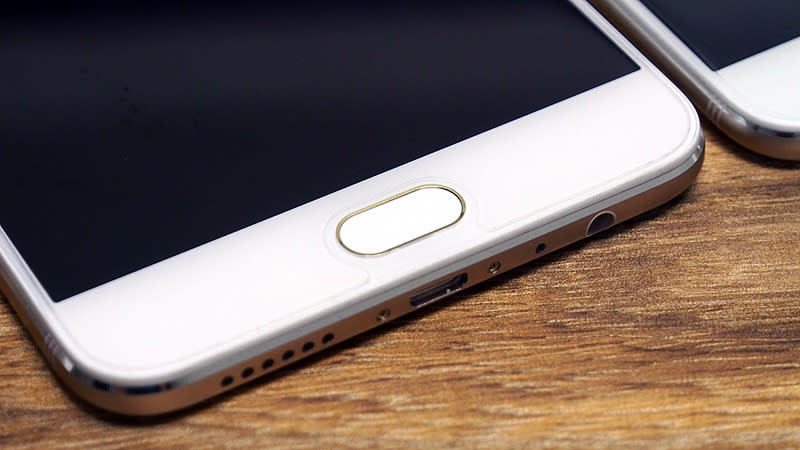
The fingerprint sensor on the Oppo R9s and R9s Plus responds to touch, and it is demarcated by a sleek metal rim. It's similar to the home button on the iPhone 7 where it is no longer a physical button but a slate (However, Apple’s version responds to varying degrees of pressure; the Oppo's one does not). The fingerprint sensor itself is very fast and responsive, and it comes with a much-needed hydrophobic coating that’s handy when your fingers are wet or sweaty but yet you need access to your mobile phone with an accurate fingerprint readout.
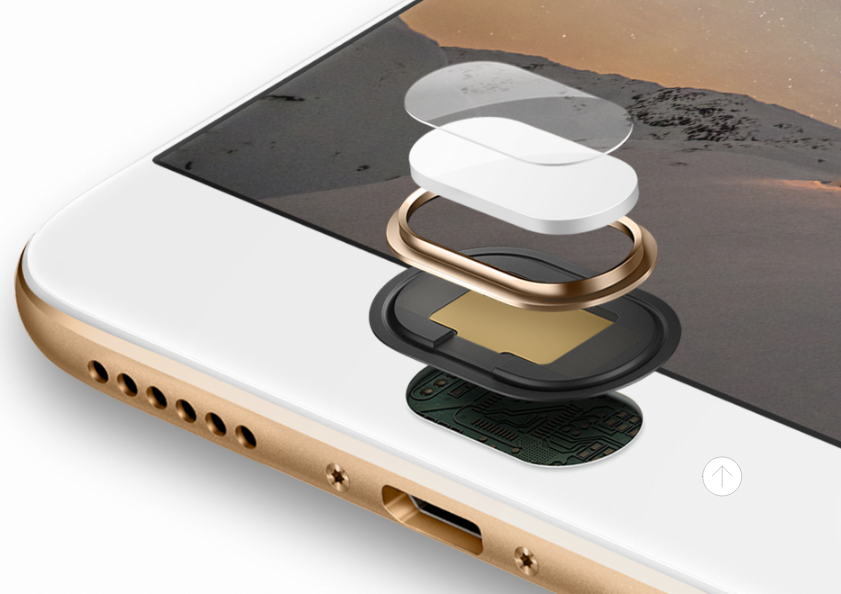
However, we've to reiterate that the rest of the phone isn’t waterproof. There's nothing wrong with omitting features, but it would've been much nicer if Oppo decided to go all out, instead of waterproofing one sliver of the whole device.
Benchmark performance
Oppo R9s uses a Qualcomm Snapdragon 625 system-on-chip, but didn't specify the processor’s clock rate. Having a Snapdragon 625 platform allows the device to utilize 300Mbps network downlink speeds. On the other hand, the Oppo R9s Plus uses a more powerful Qualcomm Snapdragon 653. It's most likely that the R9s Plus will trade battery life for more raw power since the Snapdragon 625 has proven itself to be effective with its battery usage.
Since these Oppo devices are priced around the mid-range bracket, we will compare them against current and popular smartphones that are also around their price range.
|
|
|
|
|
| |
— | — |
| — |
|
| |
|
|
|
|
|
| |
|
|
|
|
|
| |
|
|
|
|
|
| |
|
|
|
|
|
| |
|
|
|
|
|
| |
|
|
|
|
|
| |
|
|
|
|
|
| |
|
|
|
|
|
| |
|
|
|
|
|
| |
|
|
|
|
|
|
Quadrant
Quadrant evaluates a device's CPU, memory, I/O, and 3D graphics performance. Both Oppo R9s and R9s Plus devices seemed to perform to expectations in this test, but will they be able to keep up all through?

3DMark Ice Storm Unlimited
3DMark Ice Storm is designed to test the gaming capabilities of a device, putting its GPU through a rigorous OpenGL ES 2.0 benchmark test that uses fixed off-screen rendering with high quality textures and post-processing effects. The Unlimited version of the benchmark disables v-sync, display scaling and other OS factors, making it ideal for chipset comparison. Once more, the results turn out to be reasonable for their competing rung.

For your own reference, the Oppo R9s scored 829 while the Oppo R9s Plus scored 1478 for the 3DMark Sling Shot benchmark - we're still gathering companion results for this new benchmark, but as with 3DMark results, the higher the score, the better.
SunSpider JavaScript
SunSpider JavaScript measures the browsing performance of a device when processing Javascript. It not only takes into consideration the underlying hardware performance, but also assesses how optimized a particular platform is at delivering a high-speed web browsing experience.

For your reference, the Oppo R9s scored 30.133 while the Oppo R9s Plus scored 45.518 for the JetStream benchmark – again, this is a new test where we're gathering test data, so we'll be a while more before we can transition. But as usual, the higher the score the better.
On a whole, the Oppo R9s Plus was expectedly more competent at the benchmarks, since it used a more powerful Qualcomm Snapdragon 653 processor. If you’re choosing between the two, the larger phone is more suited for graphically intense apps, such as games. The smaller Oppo R9s is still very capable for general use, and that’s further emphasized in our Battery Performance benchmarks.
Camera performance

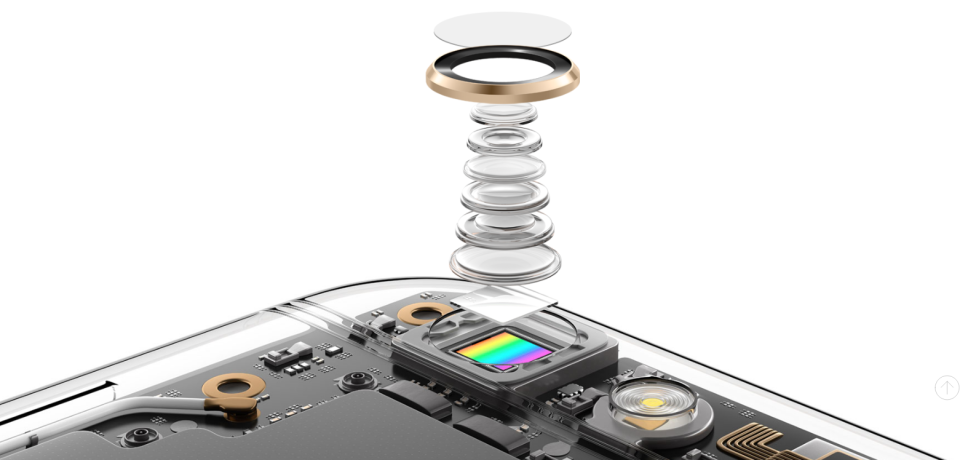
The Oppo phones use a 16-megapixel rear camera with f/1.7 aperture that's backed by an "exclusive" Sony IMX398 sensor. For the uninitiated, it simply means that the particular Sony mobile sensor can only be found on the R9s and R9s Plus (for comparison's sake, the OnePlus 3T comes with an older Sony IMX298 sensor). What's interesting about the R9s and R9s Plus are their 16-megapixel front cameras with f/2.0 aperture. If you like selfies, this is very good news to capture yourself in crisp, sharp and in very high resolution.
The real mark of camera performance is generally summed up based on the rear camera's capability, so here are our findings for the R9s and R9s Plus:
The Oppo R9s and R9s Plus feature very strong and stark contrast handling. How do we tell? Looking at the dark outlines with the bear's fur seems to bring out the plushie nicely, but black objects like the figurines and toys lose their details. Similarly, the whites (like the playing cards and color chart) are also blown out. Otherwise, the phones are capable of taking well-colored images at relatively low noise levels under indoor lighting; just that they aren't the most accurate in capturing very bright and dark color areas distinctly.
Battery life
Our standard battery test for mobile phones includes the following parameters:
Looping a 720p video with screen brightness and volume at 100%
Wi-Fi and Bluetooth connectivity turned on
Constant data streaming through email and Twitter

The smaller R9s packs a 3,010mAh battery, while the bigger R9s Plus packs 4,000mAh. Battery capacity isn’t everything and the Oppo pair illustrates this very well. Despite the R9s using an efficient processor like the Qualcomm Snapdragon 625 and an AMOLED screen, it clearly didn't exhibit anything like the battery efficiency we saw on the ASUS ZenFone 3, let alone the Moto Z Play. In fact, battery uptime was very middling.
Things are not much different on the R9s Plus, which not only uses a larger display, but a more powerful Snapdragon 653 platform. In the end, it too couldn't cope with a phone like the Galaxy A7 (2017). While the phone still managed north of eight hours uptime activity through our taxing battery test, it just didn't match up with some of the more well known models from the competition.
The saving grace? Oppo R9s and R9s Plus come with its proprietary VOOC Flash Charge technology to juice up the phone fast and we've tested them to work really well. The best way to ensure that you engage fast charging on these Oppo phones is to use its provided adapter and cable (because there aren't many third-party adaptors that support VOOC Flash Charge and cheap cables may be detrimental for fast charging that uses higher voltage and current.)
Conclusion

In a nutshell, the Oppo R9s and Oppo R9s Plus are reasonably decent phones - all the expected functionality for its price point, good design (albeit it looks very familiar) and has an acceptable set of cameras for normal photography and high resolution selfies. However in these days, a decent phone for a reasonable price may not be adequate and Oppo needs to be concerned about competition.
The smaller Oppo R9s (S$679) is up against more affordable options with similar specifications, like the Xiaomi Redmi Note 4 (S$259) and ASUS ZenFone 3 (from S$498). These alternatives sport equally nice designs, comparable features and are more power efficient, so there’s no shortage of good-looking mid-range devices that are powered by the Snapdragon 625 processor.
The pricier Oppo R9s Plus (S$779) will need to contend with more trickier options – for similar performance, there’s the cheaper Samsung Galaxy A7 2017 (S$648) that has a pretty good all-round feature set and performance (even though it only has 32GB of built-in storage). There are also 2016 flagship phones below the R9s Plus’s price tag (OnePlus 3T and Xiaomi Mi 5), and these rivals have longer-lasting batteries as well. Even the notoriously inefficient MediaTek processor found on the 6.0-inch Sony Xperia XA Ultra (S$498) lasted a little longer in our benchmarking tests! And if you haven't noticed, you could actually get LG's flagship G6 phone from S$850 at online stores, which is only a wee bit more than the R9s Plus.
Would we recommend the R9s and R9s Plus? That's difficult since Oppo released these mobile devices a little too late to the Singapore market, at a price that makes it harder to justify its position. Furthermore, the design language of the phone looks so borrowed that it can easily pass off as looking like an iPhone. Imitation is the best form of flattery, but it doesn't quite score brownie points in our books since it's not unique. That said, the Oppo R9s and Oppo R9s Plus are still attractive, thanks to their decent camera performance, the phone’s general aesthetics, and handling during day-to-day use.
 | |
 |


